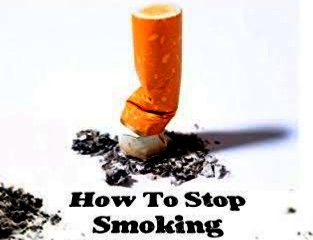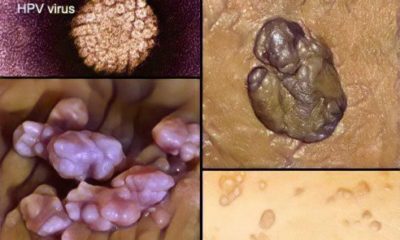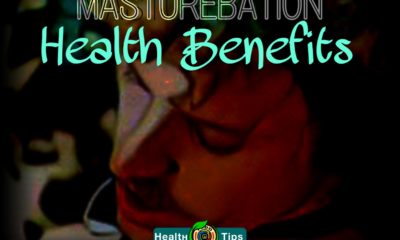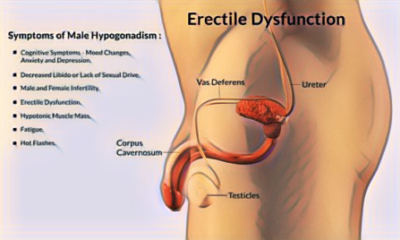Health
Depression: Causes, symptoms, and treatments
Everyone feels sad or low sometimes, but these feelings usually pass with a little time. Depression also called “clinical depression” or a “depressive disorder” is a mood disorder that causes distressing symptoms that affect how you feel, think, and handle daily activities, such as sleeping, eating or working.
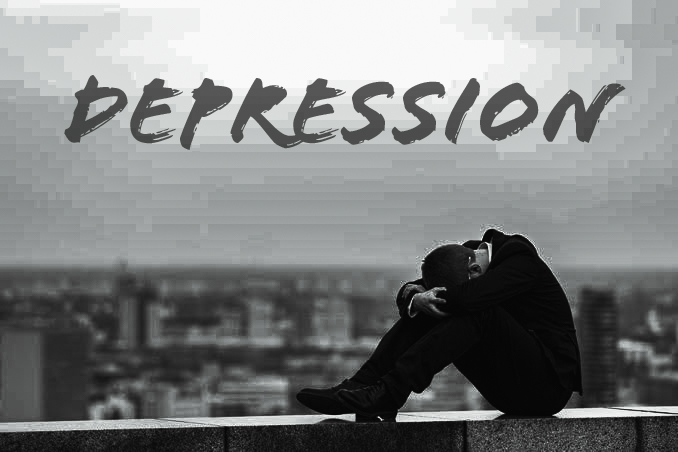


Depression can be a part of several mental health problems:
- Bipolar disorder
- Borderline personality disorder (BPD) and other personality disorders
- Schizoaffective disorder
What are the different types of depression?
Two of the most common forms of depression are:
- Major depression having symptoms of depression most of the day, nearly every day for at least 2 weeks that interfere with your ability to work, sleep, study, eat, and enjoy life. An episode can occur only once in a person’s lifetime, but more often, a person has several episodes.
- Persistent depressive disorder (dysthymia) having symptoms of depression that last for at least 2 years. A person diagnosed with this form of depression may have episodes of major depression along with periods of less severe symptoms.
Some forms of depression are slightly different, or they may develop under unique circumstances, such as:
- Perinatal Depression: Women with perinatal depression experience full-blown major depression during pregnancy or after delivery (postpartum depression).
- Postpartum depression (PPD) is a condition that describes a range of physical and emotional changes that many mothers can have after having a baby. PPD can be treated with medication and counseling.

- Seasonal Affective Disorder (SAD): SAD is a type of depression that comes and goes with the seasons, typically starting in the late fall and early winter and going away during the spring and summer.
- Psychotic Depression: This type of depression occurs when a person has severe depression plus some form of psychosis, such as having disturbing false fixed beliefs (delusions) or hearing or seeing upsetting things that others cannot hear or see (hallucinations).
- Bipolar disorder is different from depression. The reason it is included in this list is because someone with bipolar disorder experiences episodes of extreme low moods (depression). But a person with bipolar disorder also experiences extreme high moods (called “mania”).
Depression level based on gender and age
- Women have depression more often than men. Biological, lifecycle, and hormonal factors that are unique to women may be linked to their higher depression rate. Women with depression typically have symptoms of sadness, worthlessness, and guilt.
- Men with depression are more likely to be very tired, irritable, and sometimes angry. They may lose interest in work or activities they once enjoyed, have sleep problems, and behave recklessly, including the misuse of drugs or alcohol. Many men do not recognize their depression and fail to seek help.
- Older adults with depression may have less obvious symptoms, or they may be less likely to admit to feelings of sadness or grief. They are also more likely to have medical conditions, such as heart disease, which may cause or contribute to depression.
- Younger children with depression may pretend to be sick, refuse to go to school, cling to a parent, or worry that a parent may die.
- Older children and teens with depression may get into trouble at school, sulk, and be irritable. Teens with depression may have symptoms of other disorders, such as anxiety, eating disorders, or substance abuse.
History of depression
Depression was initially called “melancholia”. The earliest accounts of melancholia appeared in ancient Mesopotamian texts in the second millennium B.C. At this time, all mental illnesses were attributed to demonic possession, and were attended to by priests. In contrast, a separate class of “physicians” treated physical injuries (but not conditions like depression). The first historical understanding of depression was thus that depression was a spiritual (or mental) illness rather than a physical one.
Ancient Greeks and Romans were divided in their thinking about the causes of melancholia. Literature of the time was filled with references to mental illness caused by spirits or demons. In the 5th century B.C., the Greek historian Herodotus wrote about a king who was driven mad by evil spirits. The early Babylonian, Chinese, and Egyptian civilizations also viewed mental illness as a form of demonic possession, and used exorcism techniques (such as beatings, restraint, and starvation) designed to drive demons out of the afflicted person’s body as treatments. In contrast, early Roman and Greek doctors thought that depression was both a biological and psychological disease. Gymnastics, massage, special diets, music, and baths, as well as a concoction of poppy extract and donkey’s milk were used to alleviate depressive symptoms.
In 1621, Robert Burton published Anatomy of Melancholy, in which he described the psychological and social causes (such as poverty, fear and solitude) of depression. In this encyclopedic work, he recommended diet, exercise, distraction, travel, purgatives (cleansers that purge the body of toxins), bloodletting, herbal remedies, marriage, and even music therapy as treatments for depression.
During the beginning of the Age of Enlightenment (the 18th and early 19th centuries), it was thought that depression was an inherited, unchangeable weakness of temperament, which lead to the common thought that affected people should be shunned or locked up. As a result, most people with mental illnesses became homeless and poor, and some were committed to institutions.
Epidemiology
Depression is prevalent among all age groups, in almost all walks of life. . Indians are among the worlds most depressed. According to a World Health Organization-sponsored study, while around 9% of people in India reported having an extended period of depression within their lifetime, nearly 36% suffered from what is called Major Depressive Episode (MDE).
Approximately 11% of Canadians meet criteria for MDD at some point in their lives and approximately 4% of Canadians suffer from MDD within any given year.1 About 2% of people with depression commit suicide, and 50% of these individuals will have been in contact with their general practitioner in the month preceding the suicide
Lowest prevalence of MDE was in China (12%). The average age of depression in India is 31.9 years compared to 18.8 years in China, and 22.7 years in the US. The female: male ratio was about 2:1.”WHO ranks depression as the fourth leading cause of disability worldwide and projects that by 2020, it will be the second leading cause.
Risk Factors for depression include:
- Prior episode(s)
- Family history of depressive disorder
- Female gender
- Postpartum period
- Peri/postmenopausal period
- Medical co-morbidity
- Lack of social support
- Major life stressor (loss of loved one or other members of social network)
- Substance abuse
- History of adverse childhood events
- Negative cognitive style
Causes of depression
The exact cause of depression is not known. Many researchers believe it is caused by chemical changes in the brain. This may be due to a problem with your genes, or triggered by certain stressful events. More likely, it’s a combination of both.
Some types of depression run in families. But depression can also occur if you have no family history of the illness. Anyone can develop depression, even kids. The following may play a role in depression:
- Alcohol or drug abuse
- Certain medical conditions, including underactive thyroid, cancer, or long term pain
- Certain medications such as steroids
- Sleeping problems
- Stressful life events, such as:
- Breaking up with a boyfriend or girlfriend

- Failing a class
- Death or illness of someone close to you
- Divorce
- Childhood abuse or neglect
- Job loss
- Social isolation (common in the elderly)
What are the signs and symptoms of depression?
Sadness is only one small part of depression and some people with depression may not feel sadness at all. Different people have different symptoms. Some symptoms of depression include:
- Persistent sad, anxious, or “empty” mood
- Feelings of hopelessness or pessimism
- Feelings of guilt, worthlessness, or helplessness
- Loss of interest or pleasure in hobbies or activities
- Decreased energy, fatigue, or being “slowed down”
- Difficulty concentrating, remembering, or making decisions
- Difficulty sleeping, early-morning awakening, or oversleeping
- Appetite and/or weight changes
- Thoughts of death or suicide or suicide attempts
- Restlessness or irritability
- Aches or pains, headaches, cramps, or digestive problems without a clear physical cause and/or that do not ease even with treatment
Tests and diagnosis of depression
Diagnosis of depression starts with a consultation with a doctor or mental health specialist. It is important to seek the help of a health professional to rule out different causes of depression, ensure an accurate differential diagnosis, and secure safe and effective treatment.
Screening
Screen patients who present with symptoms for MDD.3 Note that some patients present with somatic symptoms. Use the ‘two quick question’ screening method.
In the past month:
- Have you lost interest or pleasure in things you usually like to do?
- Have you felt sad, low, down, depressed or hopeless? An answer of yes to either question requires a more detailed assessment
- An answer of yes to either question requires a more detailed assessment
Assessment
The detailed assessment includes: • Clinical interview to determine if the patient meets the Diagnostic and Statistical Manual of Mental Disorders criteria to diagnose MDD by using SSIGECAPS and focusing on functional status.
S – Sadness (depressed mood)
S – Sleep disturbance (insomnia, hypersomnia)
I – Interest reduced (anhedonia)
G – Guilt and self-blame
E – Energy loss and fatigue
C – Concentration problems
A – Appetite changes (low/increased appetite or weight loss/gain)
P – Psychomotor changes (retardation, agitation)
S – Suicidal thoughts
Review PHQ-9 score and responses.* The PHQ-9 is a patient administered questionnaire that aids in the diagnosis and assesses the severity (e.g., mild, moderate, severe) of depression.6-9
Consider:
- Differential diagnosis, particularly screening for Bipolar I and II;
- Past history of depression and its treatment;
- Family history of a mood disorder;
- Psychosocial stressors;
- Any medical conditions associated with depression (e.g., chronic obstructive pulmonary disease, migraine, multiple sclerosis, back problems, cancer, epilepsy, asthma, stroke, thyroid disease, diabetes and heart disease); and Collateral information from family or friends
Differential Diagnosis
When arriving at the differential diagnosis, consider the following:
- Ruling out medical conditions that require laboratory tests (e.g., thyroid stimulating hormone, Vitamin B12);
- Other psychiatric syndrome (e.g., adjustment disorder, anxiety disorder, bipolar disorder I or II, psychosis, alcohol and/or substance abuse);and
- Medications that mimic mood disorders (see Appendix A: Medications that Mimic Mood Disorders).
Suicide Risk Assessment
Once patient has met MDD criteria, conduct a suicide risk assessment.
- Ask the patient if they have thoughts of death or suicide, feel life is not worth living, have made a previous suicide attempt and if there is a family history of suicide.
- If the answer is yes to any of the above, ask about their plans for suicide (e.g., have they considered a method, do they have access to material required for suicide and if they have written a note).
- Consider emergency psychiatric consultation and in-patient treatment if the patient has: persistent suicidal thoughts; a previous suicide attempt; or a current plan.
- If the patient is considered low risk, discuss and/or create a safety plan with the patient, detailing steps the patient will take if their situation deteriorates.
Treatment and medications for depressed person
The first step in getting the right treatment is to visit a health care provider or mental health professional, such as a psychiatrist or psychologist. Your health care provider can do an exam, interview, and lab tests to rule out other health conditions that may have the same symptoms as depression.
Once diagnosed, depression can be treated with medications, psychotherapy, or a combination of the two. If these treatments do not reduce symptoms, brain stimulation therapy may be another treatment option to explore
Medications
- Medications called antidepressants can work well to treat depression.
- Selective serotonin reuptake inhibitors (SSRIs) are medications that increase the amount of the neurochemical serotonin in the brain. SSRIs are often the first-line treatment for depression. Examples of SSRIs include fluoxetine (Prozac), paroxetine (Paxil), ser traline (Zoloft), citalopram (Celexa), fluvoxamine (Luvox), and escitalopram (Lexapro).
- Serotonin and norepinephrine reuptake inhibitors (SNRIs)
- Tricyclics and tricyclic-related drugs
- Monoamine oxidase inhibitors (MAOIs)
They can take 2 to 4 weeks to work. Antidepressants can have side effects, but many side effects may lessen over time. Talk to your health care provider about any side effects that you have. Do not stop taking your antidepressant without first talking to your health care provider.
Psychotherapy
Psychotherapy helps by teaching new ways of thinking and behaving, and changing habits that may be contributing to depression. Therapy can help you understand and work through difficult relationships or situations that may be causing your depression or making it worse.
Brain stimulation therapies
- Electroconvulsive therapy (ECT) and other brain stimulation therapies may be an option for people with severe depression who do not respond to antidepressant medications. ECT is the best studied brain stimulation therapy and has the longest history of use.
- Transcranial magnetic stimulation (TMS) uses pulses of energy to stimulate nerve cells in the brain that are believe to affect mood. There is some research to suggest that it can help relieve depression.
- Light therapy may relieve depression symptoms in the winter time. However, it is usually not considered a first-line treatment.
How to control and prevent yourself from depression?
As you continue treatment, you may start to feel better gradually. Remember that if you are taking an antidepressant, it may take 2 to 4 weeks to start working. Try to do things that you used to enjoy. Go easy on yourself. Other things that may help include:
- Trying to be active and exercise
- Breaking up large tasks into small ones, set priorities, and do what you can as you can
- Spending time with other people and confide in a trusted friend or relative
- Postponing important life decisions until you feel better. Discuss decisions with others who know you well
- Avoiding self-medication with alcohol or with drugs not prescribed for you
How to support a person who is depressed?
If you know someone who has depression, first help him or her see a health care provider or mental health professional. You can also:
- Offer support, understanding, patience, and encouragement
- Never ignore comments about suicide, and report them to your loved one’s health care provider or therapist
- Invite him or her out for walks, outings, and other activities
- Help him or her adhere to the treatment plan, such as setting reminders to take prescribed medications
- Help him or her by ensuring that he or she has transportation to therapy appointments
- Remind him or her that, with time and treatment, the depression will lift
Article source: DISEASESDIC







